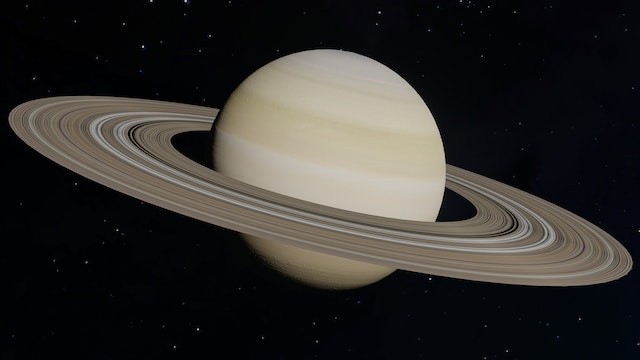
NASA is about to launch a new mission to study the biggest moon on Saturn - Titan. The exploration aims to know the chemistry that ultimately led to the formation of life on Earth.
Dragonfly: The New Mission to Study Saturn's Giant Moon Titan
The US space agency will launch a new revolutionary mission to Saturn called Dragonfly in 2027. It is expected to arrive on the Ringed Planet in 2030, SciTech Daily reported.
Dragonfly will carry an instrument called the Dragonfly Mass Spectrometer (DraMS), designed to aid scientists in exploring the chemistry at work on Titan to shed light on the kinds of chemical steps that also occurred on Earth, ultimately leading to life formation called prebiotic chemistry. The instrument will allow the researchers to study Titan's chemical makeup remotely.
Titan has a great carbon-rich chemistry, interior ocean, and liquid water on its surface in the past, making it an ideal destination to study prebiotic chemical processes and the potential habitability of an extraterrestrial environment.
Dr. Melissa Trainer of NASA's Goddard Space Flight Center, Greenbelt, Maryland, said they wanted to know if the type of chemistry that could be important for early pre-biochemical systems on Earth is also happening in Titan.
Trainer is a planetary scientist and astrobiologist specializing in Titan. She is also one of the Dragonfly mission's deputy principal investigators. Trainer also leads the DraMS instrument, which will scan and measure sample materials from Titan.
In a separate report from SciTech Daily, NASA is sending Dragonfly to Titan for several reasons, to explore Titan's thick atmosphere, which is similar to Earth, and learn about the intriguing chemistry happening there. Also, it's a real-time science that can't be reproduced in a lab.
ALSO READ : Massive Asteroid About the Size of 69 American Alligators Will Pass by Earth Tuesday, NASA Warns
More About the Dragonfly Mass Spectrometer (DraMS)
The Dragonfly robotic rotorcraft will use Titan's low gravity and dense atmosphere to explore the different points of interest on Titan. It can fly as far as several miles allowing the Dragonfly's entire suite of instruments to relocate to a new site once it's done with a previous site. It also provides access to samples in environments with various geologic histories.
Drill for Acquisition of Complex Organics (DrACO) will be used to drill a less-than-gram sample on the surface. It will then be bought inside the lander's main body to a place called the "attic," which houses the DraMS instrument.
The sample will be irradiated by an onboard laser or vaporized in an oven to be measured by DraMS. It will use a mass spectrometer that analyzes the various chemical components of a sample via molecular weight determination to quantify compounds and determine the structure and chemical properties of molecules.
DraMS is designed to examine the organic molecules that may be present on Titan, including their composition and distribution in different surface environments. Organic molecules contain carbon and are used by all forms of life. Scientists are interested in studying them when they explore the formation of life because living and non-living processes can create them.
RELATED ARTICLE : NASA's DART Spacecraft Worked! Asteroid Killer Changed the Harmless Space Rock's Orbit More Than Expected
Check out more news and information on Space in Science Times.
© 2026 ScienceTimes.com All rights reserved. Do not reproduce without permission. The window to the world of Science Times.












